Introduction
Welcome to the captivating world of predator-prey interactions. Among the many fascinating connections in the animal kingdom, the relationship between hawks and rabbits stands out as a prime example. Hawks, renowned for their keen eyesight, impressive flight skills, and predatory nature, often find themselves engaged in a dynamic dance with the swift and cautious rabbits. This intricate interplay of survival and adaptation showcases the strategies both species employ to thrive in their respective roles. In this exploration, we delve into the question: Do hawks eat rabbits? By delving into the behavioral patterns, ecological significance, and evolutionary adaptations, we can uncover the captivating narrative of these two creatures and the pivotal role they play in maintaining the delicate balance of nature’s ecosystem.
Hawks, as predatory birds, have evolved to be efficient hunters, relying primarily on their exceptional eyesight to spot potential prey from high vantage points in the sky. Rabbit eat on the other hand, are quick and agile herbivores known for their ability to swiftly evade danger through rapid bursts of speed and strategic hiding.
In the context of whether hawks eat rabbits, the answer is yes, they do. Many species of hawks include rabbits in their diet, especially smaller species like the Cooper’s Hawk and the Red-tailed Hawk. These hawks have adapted to hunting various prey, and rabbits can make up a significant portion of their diet, especially in habitats where rabbits are abundant.
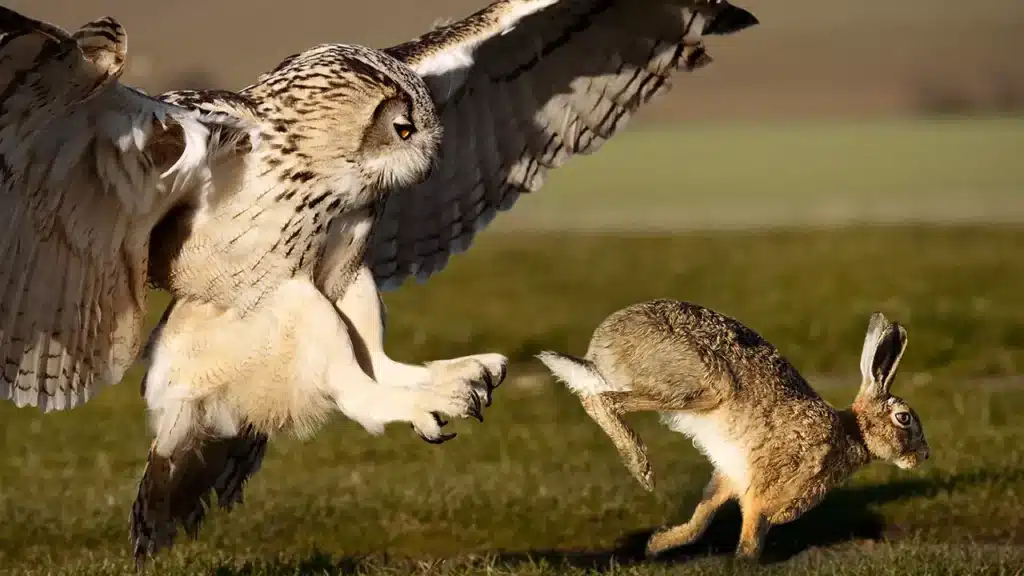
What does a hawk do to a rabbit?
They typically hunt by flying high in the sky and looking for prey below. Once they spot a rabbit, they swoop down and grab the prey with their talons before flying off. The hawk takes the prey to an elevated perch or tree branch and kills it by gripping it tightly and breaking its neck.
The Stalk and Swoop
Hawks are renowned for their exceptional eyesight, capable of spotting even the slightest movement from great distances. When a hawk spots a rabbit, the initial phase of the encounter begins. The hawk enters a mode of stealth, perching on a high vantage point or soaring in the sky, analyzing its potential prey. With unwavering focus, it assesses the rabbit’s behavior, anticipating its movements and calculating the optimal moment to strike.
The Ambush
As the hawk zeroes in on its target, it launches into action with a precision that’s a testament to millions of years of evolutionary refinement. Employing its powerful wings and aerodynamic body, the hawk descends upon the rabbit in a rapid, calculated swoop. This sudden and unexpected assault is a crucial element of the hawk’s strategy, as it aims to capitalize on the element of surprise, leaving the rabbit with minimal time to react.
The Capture
At the heart of this encounter lies the hawk’s primary weapons: its talons. Armed with sharp, curved talons, the hawk skillfully grasps the rabbit with remarkable force. These talons serve as both instruments of restraint and weapons of destruction. The hawk’s grip is so powerful that it immobilizes the rabbit, rendering it incapable of escape. In this pivotal moment, the predatory prowess of the hawk is fully evident.
Can a rabbit outrun a hawk?
This little rabbit has an extraordinarily narrow escape. It is pursued through the undergrowth by a determined hawk but manages to get away. Not only can it run very fast but it is also able to contort its body into amazing shapes that the hawk simply cannot grab a hold of!
Setting the Stage
Our story takes place in a serene meadow nestled at the edge of a dense forest. The meadow, adorned with vibrant wildflowers and lush grass, is the rabbit’s home turf. However, lurking above is a menacing hawk with keen eyesight and deadly talons, ready to swoop down on any unsuspecting creature that crosses its path.
The Encounter
On a warm summer morning, as the sun painted the sky in hues of gold, the rabbit emerged from its burrow, blissfully unaware of the impending danger. As it nibbled on succulent clover leaves, a shadow suddenly cast over the meadow – the hawk had spotted its potential meal. With a shrill cry, the hawk began its swift descent, its wings cutting through the air like a blade.
The Rabbit’s Quick Thinking
Instinct and panic surged through the rabbit as it sensed the danger above. Adrenaline coursing through its veins, the rabbit’s mind raced. In a matter of seconds, it devised a daring escape plan. Instead of running in a straight line, the rabbit zigzagged across the meadow, employing a strategy known as “predator confusion.” Its sudden shifts in direction made it challenging for the hawk to predict its next move, forcing the airborne predator to adjust its flight path repeatedly.
The Chase Unfolds
The hawk, despite its incredible speed and precision, found itself perplexed by the rabbit’s unconventional maneuvers. The rabbit’s quick reflexes and agility proved to be its greatest assets. As the chase continued, the rabbit darted through thickets and underbrush, using its knowledge of the terrain to its advantage. It slipped through narrow crevices and changed direction with such fluidity that the hawk struggled to maintain its pursuit.
What are rabbits eaten by?
Rabbits are eaten by wolves, coyotes, and stoats. Wolves, coyotes, birds, stoats, dogs, and ferrets are some of the animals that eat rabbits. Most rabbits are quick on their feet, and may sometimes outrun a predator. However, rabbits are prey animals, so there’s quite a long list of creatures waiting to eat them.
Carnivorous Birds: Birds of prey like hawks, eagles, and owls are skilled hunters that target rabbits as a source of food. Their exceptional eyesight and powerful talons make them formidable opponents for rabbits.
Carnivorous Mammals: Carnivorous mammals such as foxes, coyotes, wolves, and bobcats are adept at stalking and ambushing rabbits. These mammals often utilize their keen sense of smell and excellent hearing to locate their prey.
Snakes: Some snake species, like the rattlesnake, are known to consume rabbits. These reptiles rely on their venom to immobilize their prey before swallowing them whole.
Canines and Felines: Domestic pets like dogs and cats, especially those allowed to roam freely, can pose a threat to rabbits. Their natural instincts as predators might lead them to chase and catch rabbits if given the chance.
Weasels and Martens: These smaller carnivorous mammals are skilled at slipping into rabbit burrows to catch their prey.
Do hawks eat rabbit bones?
Hawks may leave behind a carcass. However, the carcasses is usually left whole and you will find tufts of fur or pieces of skin and fur scattered around the carcass. Hawk do not like to eat fur, skin, or bones.
Hawk Die
Hawks are carnivorous birds of prey belonging to the Accipitridae family. Their diet primarily consists of small mammals, birds, and occasionally reptiles and insects. Hawks are equipped with sharp, hooked beaks and powerful talons that enable them to capture, kill, and consume their prey.
Rabbit Consumption
Hawks are known to target rabbits as part of their diet due to their relatively large size compared to other prey species. However, the way hawks consume their prey raises questions about the fate of rabbit bones.
When hawks capture a rabbit, their first step is to tear into the flesh and consume the nutritious muscle tissue. The feathers, fur, and other indigestible parts are typically regurgitated as pellets. These pellets are compact masses that contain bone fragments, fur, and other materials that the hawk’s digestive system cannot break down.
The Role of Pellets
Hawks, like many birds of prey, regurgitate pellets after digesting their food. These pellets, which can vary in size, contain bones, fur, feathers, and other indigestible parts of their prey. This behavior helps hawks effectively manage the parts of their meals that are not nutritionally valuable.
What eats a hawk?
Hawks get attacked and can be eaten by hawks that are larger, eagles, owls, raccoons, foxes, and snakes. Their position on the food chain keeps them out of reach for most predators. However, hawk eggs and younger hawks who haven’t developed full strength can still be gobbled up.
Other Raptors: Larger raptors, such as eagles and owls, are potential predators of hawks. In areas where their territories overlap, territorial disputes and competition for resources can lead to clashes between these birds of prey. For instance, a golden eagle might target a smaller hawk as competition for prey.
Great Horned Owls: These nocturnal predators are known to prey on various raptor species, including hawks. Their stealthy approach and powerful talons make them capable of surprising and overpowering hawks, particularly in low-light conditions.
Coyotes and Foxes: While not aerial predators, these mammals are opportunistic scavengers. They may feed on hawk carcasses or prey items left behind by hawks.
Snakes: Some larger snake species, such as the eastern kingsnake, have been observed attacking and consuming young hawks in their nests.
Humans: Though not natural predators, humans can impact hawk populations through habitat destruction, pollution, and accidental collisions with vehicles and structures.
What animal is the enemy of the rabbit?
Rabbits are prey animals whose predators include foxes, dogs, cats, birds of prey and stoats. This affects how and what they eat, how they communicate with each other and how they spend their time. Rabbits eat grasses and other plants, and their teeth and digestive system are designed for poor quality, high fibre food.
Foxes: Foxes are skilled hunters known for their intelligence and adaptability. They use stealth and speed to chase down rabbits, often pouncing on them with a burst of energy. Red foxes, in particular, are known to have a diverse diet that includes rabbits.
Coyotes: Coyotes are opportunistic predators that inhabit a wide range of habitats. They hunt rabbits individually or in packs, employing a combination of strategy and teamwork to capture their prey.
Birds of Prey: Raptors like hawks, eagles, and owls have keen eyesight and powerful talons that make them formidable predators of rabbits. These birds often target young or vulnerable rabbits, swooping down from the sky to capture their unsuspecting prey.
Bobcats: Bobcats are stealthy hunters that rely on their sharp senses to stalk and ambush rabbits. They are capable of climbing trees and using camouflage to get close to their prey before striking.
Weasels and Stoats: These small and agile carnivores are adept at infiltrating rabbit burrows to catch their prey. Their slender bodies and sharp teeth allow them to access tight spaces.
Snakes: Some snake species, particularly those that are constrictors, may prey on rabbits. They use their strong bodies to squeeze and immobilize their prey before consuming it.
Domestic Pets: Domestic dogs and cats, especially those that are allowed to roam freely outdoors, can pose a threat to rabbits. Their natural instincts as predators might lead them to chase and catch rabbits.
Humans: While not natural predators, humans have historically hunted rabbits for food and sport. Habitat destruction and urbanization caused by human activities can also impact rabbit populations.
Do deer eat rabbits?
Deer can eat the carcass of a dead rabbit. However, Deer cannot hunt, kill, and finally eat a rabbit. They cannot also bite into the body cavity of a rabbit and must rely on what is left behind, after kills by predators.
Availability of Food: When food sources are scarce or vegetation is limited, deer may become opportunistic and broaden their diet to include animal matter.
Nutritional Needs: Certain nutrients that may be lacking in their typical plant-based diet could lead deer to explore alternative food sources, including animal protein.
Seasonal Variation: In certain seasons, when plant food is less abundant, deer might be more inclined to supplement their diet with animal matter.
Behavioral Anomalies: Some individuals might exhibit unusual behaviors, such as scavenging or experimenting with different food sources, including rabbits.
Predation on Weak or Young Rabbits: Deer, particularly white-tailed deer, have been observed consuming young or weak rabbits. This behavior might be driven by the availability of easy-to-capture prey.
How do I protect my rabbit from hawks?
Build your rabbit a predator-proof hutch made from solid wood with strong wire mesh and sturdy bolts. Outdoor runs should be covered to prevent hawk attacks with a floor to stop foxes digging underneath. Use motion-activated lights and sprinklers to scare predators away.
Housing and Enclosures:
Providing a secure and appropriately sized enclosure is the first step in protecting your rabbit from hawks. Opt for a hutch or enclosure with a solid roof to prevent hawks from swooping in. Additionally, ensure that the sides of the enclosure are made of materials that hawks cannot easily penetrate, such as wire mesh with small openings.
Cover and Shelter:
Natural or artificial cover can help shield your rabbit from overhead threats. Planting shrubs, tall grass, or creating shaded areas in the enclosure can offer protection. In outdoor spaces, consider adding a roof or mesh netting to deter hawks from diving into the area.
Supervised Outdoor Time:
If you allow your rabbit outdoor playtime, always supervise them closely. Use a secure, enclosed playpen or harness to prevent your rabbit from wandering into open areas where they could be vulnerable to hawks.
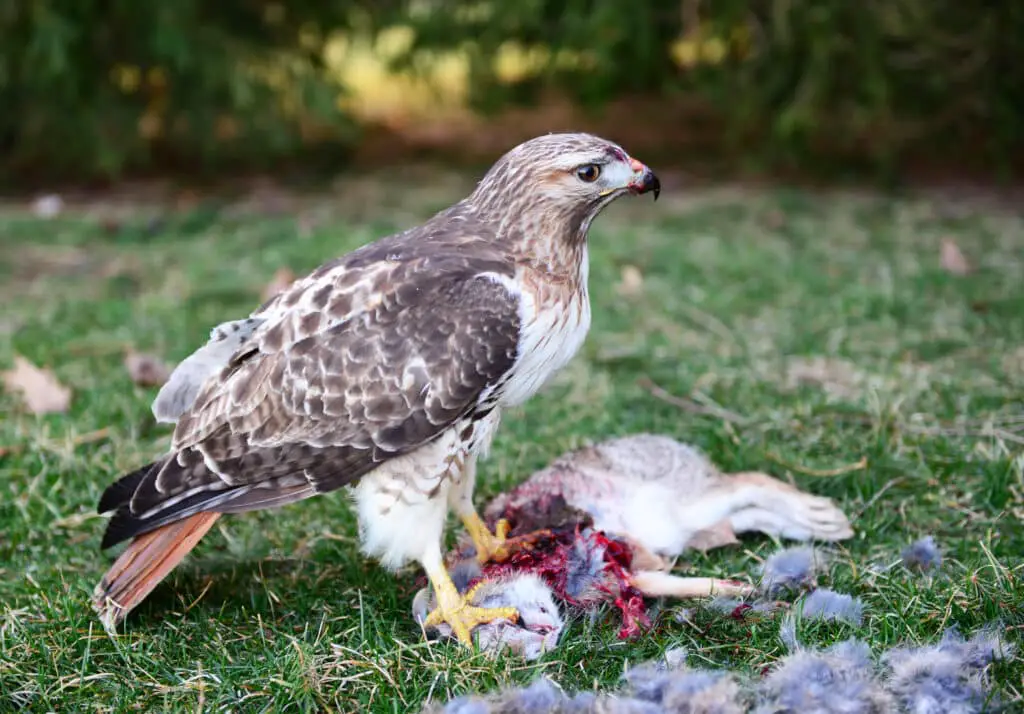
Conclusion
In the intricate tapestry of the natural world, the question of whether hawks eat rabbits reveals a captivating tale of adaptation, survival, and the delicate balance that characterizes ecosystems. Through the sharp eyes of hawks and the swift evasion of rabbits, we witness a dance that has unfolded over millennia, shaping the behaviors and characteristics of both species.
Hawks, embodying the role of skilled predators, have honed their abilities to detect movement from great distances and execute precise attacks. Their mastery of flight, keen senses, and powerful talons exemplify the result of millions of years of evolution, enabling them to thrive in various habitats. At the same time, rabbits, embodying the essence of agility and alertness, have developed strategies that allow them to navigate their environment while minimizing the threat of predation.
The fact that hawks do indeed consume rabbits emphasizes the integral role of predator-prey relationships in maintaining the balance of nature. As hawks hunt rabbits, they contribute to regulating rabbit populations, preventing unchecked growth that could lead to overgrazing and habitat degradation. This in turn supports the health of plant communities and the broader ecosystem.
In a broader context, the interaction between hawks and rabbits is a reminder of the interconnectedness of life forms and their environments. Each species plays a unique role, and the survival of one often depends on the presence of the other. The story of hawks and rabbits underscores the intricate web of life that shapes the natural world, reminding us of the fascinating complexity that lies beneath the surface of seemingly simple questions.

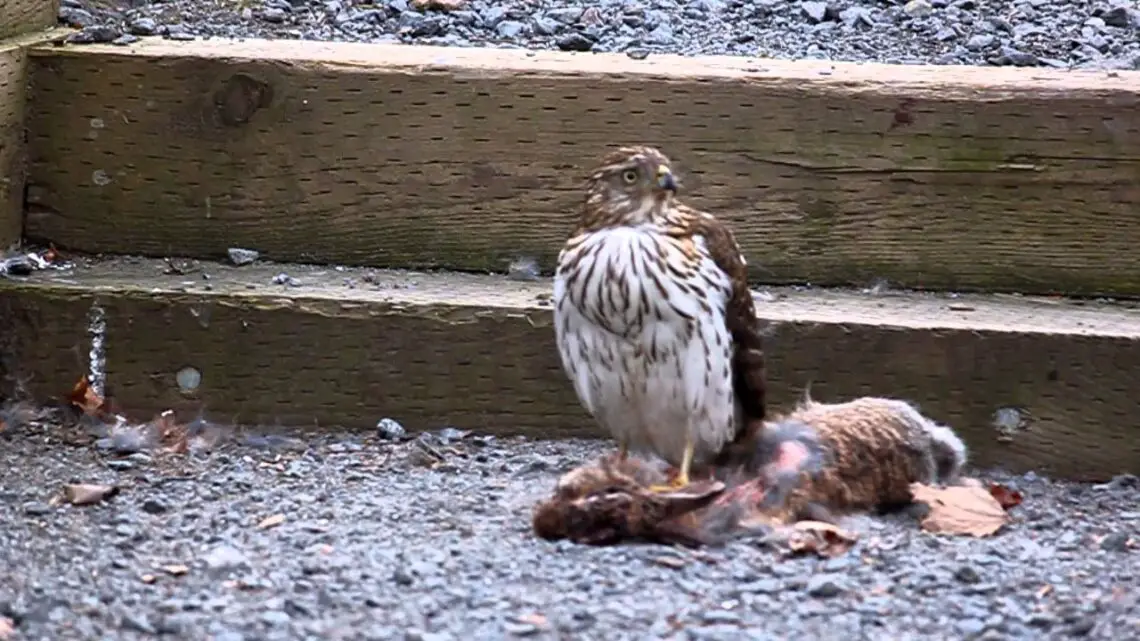
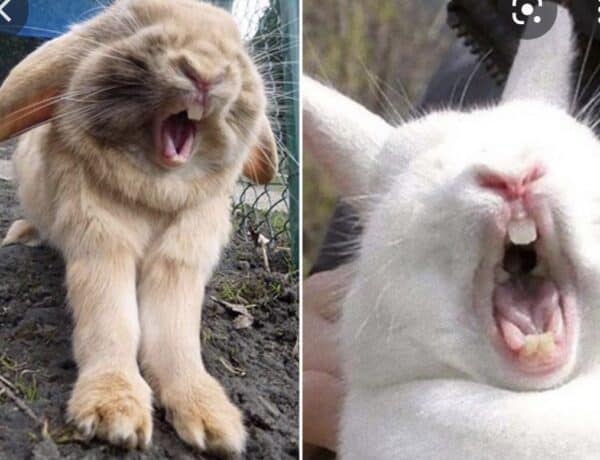
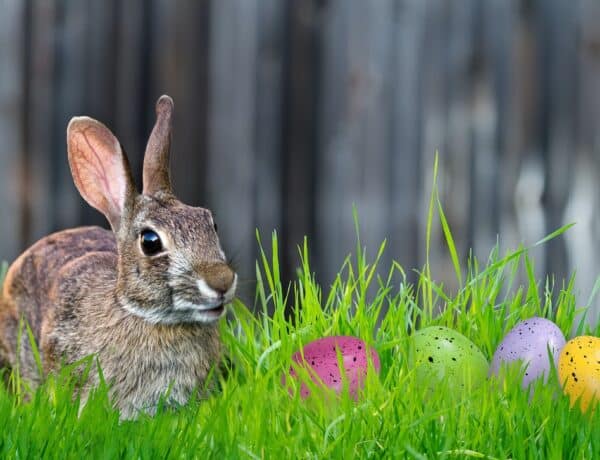

No Comments